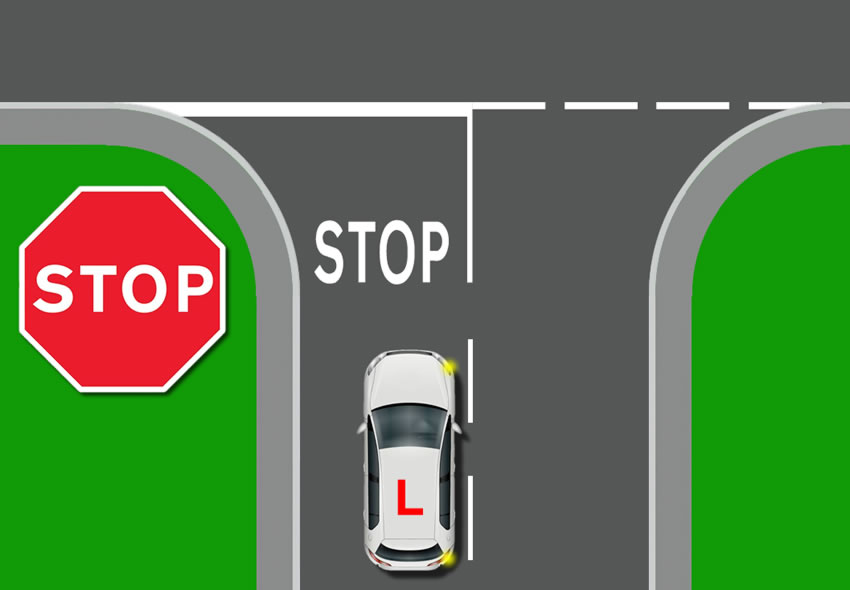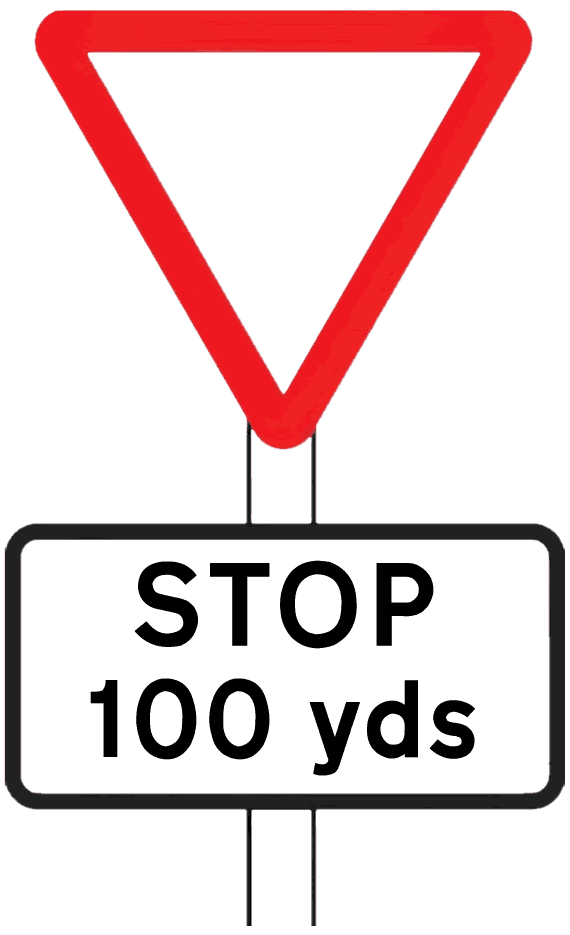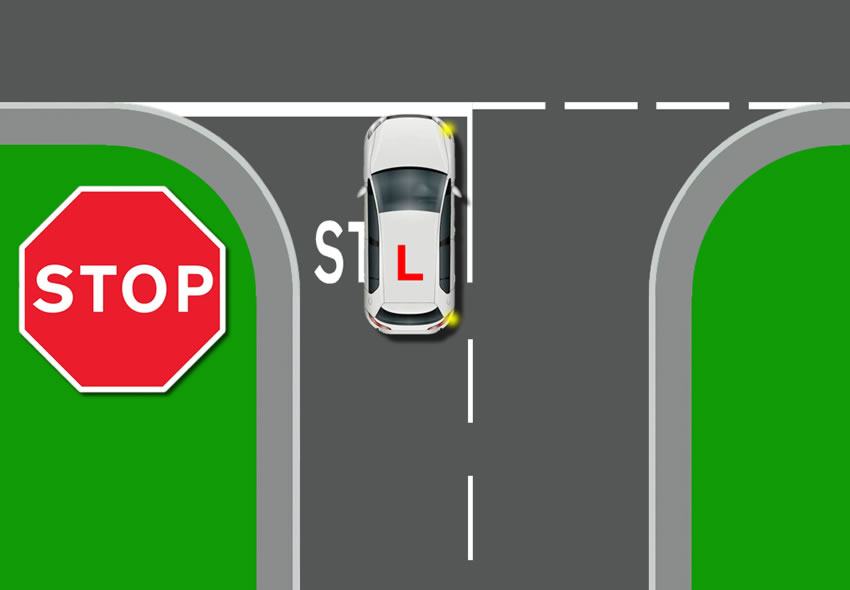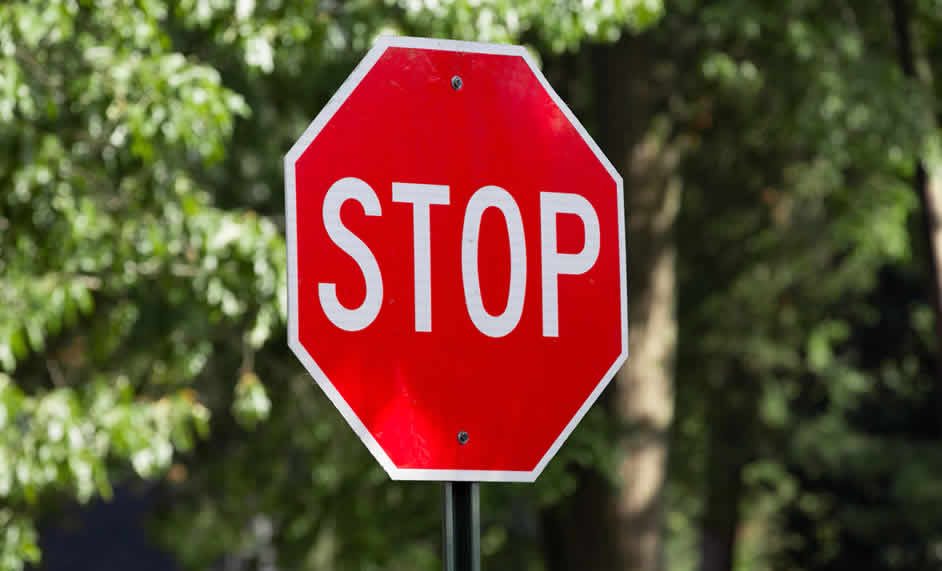A stop junction is a type of marked junction that drivers must stop at. Marked junctions will either have the give way or stop rule applied to them.
At a give way T-junction, you may continue to merge from the minor road into the major road without stopping if it’s safe to do so. But at a stop T-junction, this would be illegal as it’s mandatory that you first stop.
How Do You Know if it’s a Stop Junction?
You’ll know that it’s a stop junction by the fact that there will be a stop sign and stop road markings.

All stop junctions have a unique red octagonal stop sign and a thick solid white horizontal stop line. The stop sign and line provide mandatory instruction that inform drivers that they must stop.
Advance Warning of Stop Junction
At some stop junctions, keep an eye out for advance warnings of the stop T-junction ahead. The advance sign will be an inverted triangle with a red border and an information plate below detailing the distance to the stop junction.

Stop Junction Rules
Stop junction rules are as follows: At a stop junction, before proceeding into the major road, you must first stop behind the solid white line. Whilst stopped, make effective observation and only move off into the major road when it’s safe to do so. If you’re not sure where to stop and need help with a reference point, see where to stop at T-junctions.
Do You Always Have to Stop at a Stop Sign?
Yes, stopping at a stop sign is mandatory, meaning that it is illegal not to stop.

Why Do We Have Stop Junctions?
Stop junctions are used in hazardous areas such as blind junctions and closed junctions. At blind and closed junctions, your view of approaching traffic is obscured, typically by buildings, fences etc. A stop junction would be used in such places as it’s safer, due to drivers having to first stop.
In the UK, the vast majority of marked junctions have the give way rules applied to them. At hazardous junctions with high traffic flow, rather than stop signs, they’ll be controlled by lights (controlled junctions). It is only at blind or closed junctions with low traffic flow that stop signs are used.
Why is it a Legal Requirement to Stop at Stop Junctions?
Due to the hazardous location of stop junctions, the legal requirement to stop simply comes down to safety for yourself, your passengers and other road users, including pedestrians.
Using the rule that forces the driver to stop before proceeding into the major road means they will take more time to observe whether or not it’s safe before merging. If you’re caught failing to stop at a stop junction, you’ll receive a fine and penalty points on your licence.
